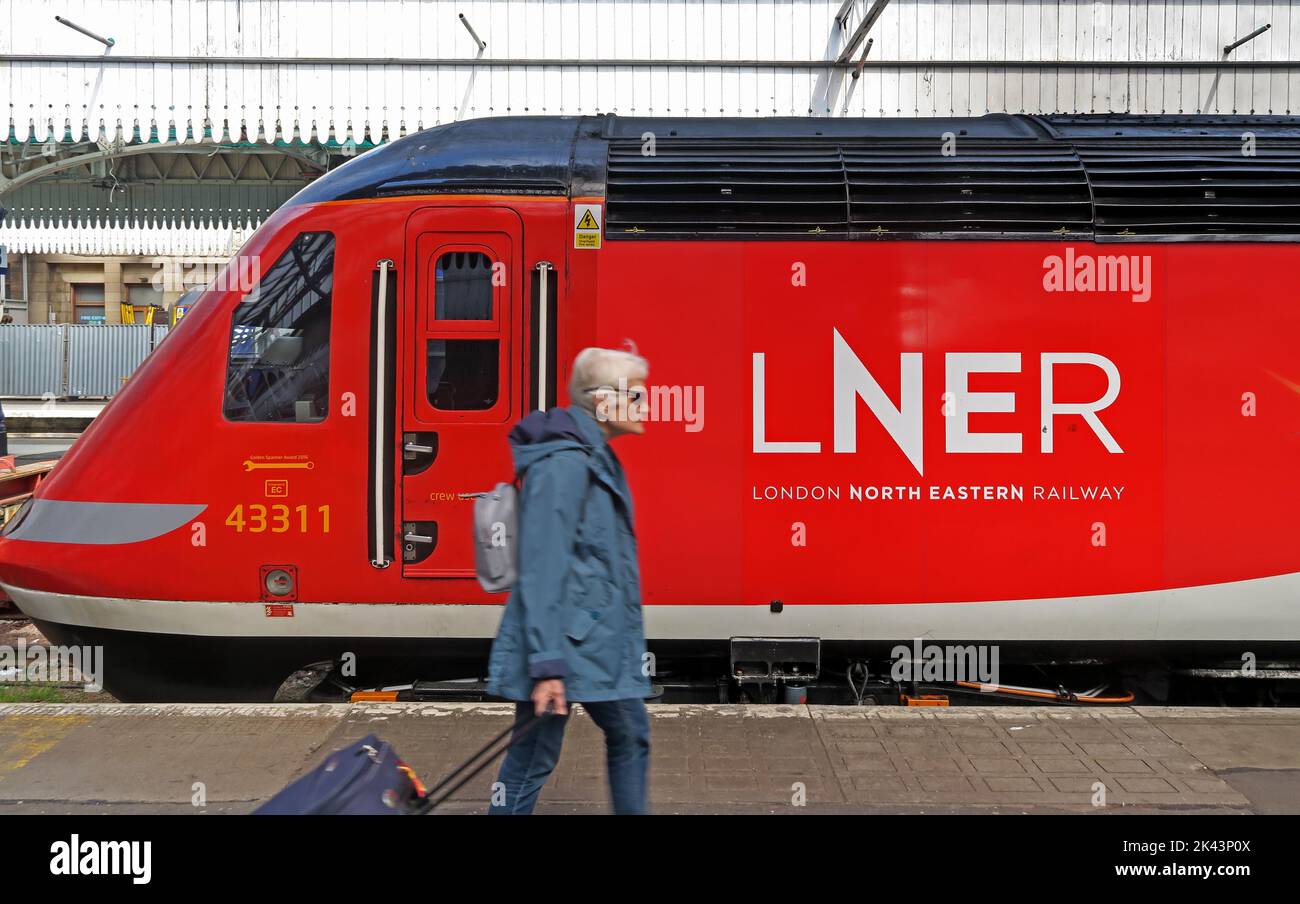Passenger walking past a LNER train engine 43311, in Aberdeen railway station, Guild St, Aberdeen, Scotland, UK, AB11 6LX

Image details
Contributor:
Tony Smith / Alamy Stock PhotoImage ID:
2K43P0XFile size:
46.2 MB (1.5 MB Compressed download)Releases:
Model - no | Property - noDo I need a release?Dimensions:
5077 x 3181 px | 43 x 26.9 cm | 16.9 x 10.6 inches | 300dpiDate taken:
7 June 2019Location:
Aberdeen railway station, Guild St, Aberdeen, Scotland, UK, AB11 6LXMore information:
The London and North Eastern Railway (LNER) was the second largest (after LMS) of the "Big Four" railway companies created by the Railways Act 1921 in Britain. It operated from 1 January 1923 until nationalisation on 1 January 1948. At that time, it was divided into the new British Railways' Eastern Region, North Eastern Region, and partially the Scottish Region. It covered the area north and east of London. It included the East Coast Main Line from London to Edinburgh via York and Newcastle upon Tyne and the routes from Edinburgh to Aberdeen and Inverness. Most of the country east of the Pennines was within its purview, including East Anglia. The main workshops were in Doncaster, with others at Darlington, Inverurie and Stratford, London On the privatisation of British Rail in 1996, the franchise to run long distance express trains on the East Coast Main Line was won by Sea Containers Ltd, who named the new operating company Great North Eastern Railway (GNER), a name and initials deliberately chosen to echo the LNER. Following the collapse of Virgin Trains East Coast in May 2018, the newly-nationalised operator of the East Coast Main Line was named London North Eastern Railway to evoke the earlier company